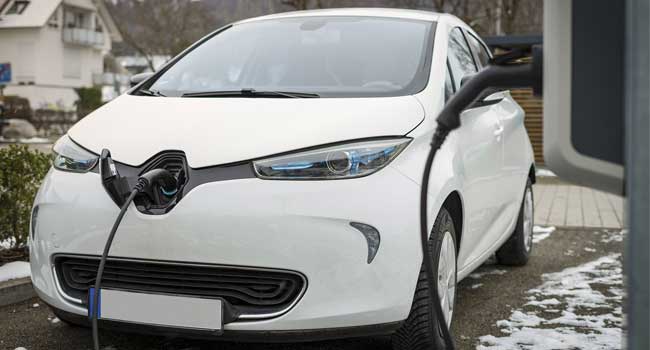February 18, 2021
Abby Nuttall
Electric and Hybrid News
When drivers are looking at an electric vehicle, or even a plug-in hybrid, they have two big questions. How will I charge it and is the mileage range large enough for me?
We’ve already looked at electric vehicle charging so today we’ll take an in-depth look at the mileage range.
This article will focus on fully electric vehicles (EVs) but the points raised will also be relevant for plug-in hybrid vehicles (PHEVs) that have a fully electric mode.
All EVs and PHEVs with a fully electric mode will have a mileage range advertised. This range is achievable for the vehicle based on the testing it goes through, which we explore below, however there are a number of real-life driving conditions and factors that will impact the range that you should know.
Electric Vehicle Range Tests
Electric vehicles will all be tested through Worldwide harmonized Light-duty vehicle Test Procedure (WLTP) which came into effect last year as the standard test for all new vehicles.
You will often see the advertised emissions, for petrol and diesel, or mileage range, for electric and hybrids, shown as per WLTP testing.
These tests are designed to be a universal measurement across all brands and manufacturers around the world. Unlike previous testing WLTP tests not only test the vehicle in laboratory conditions but also in real-world simulations with the aim of being a more realistic measurement.
Vehicles will be tested in a number of driving situations including urban and rural roads as well as motorway scenarios, in realistic weather conditions and under a wider range of temperatures. For fully electric vehicles they also involve testing at higher speeds, as they have a higher energy consumption then.
When looking at an EV and whether the mileage range is suitable for you it’s important to remember that although WLTP testing is designed to be more realistic, they don’t take into account all of the factors we list below that may reduce the range by a few miles.
What Affects the Mileage Range of an Electric Vehicle?
As mentioned above there are a number of factors that can impact the mileage range of an EV and these include:
- Driving style
- Terrain and road typography
- Weather
- Weight
- Heating and air conditioning use
- Tyre condition
- Battery condition
To help you understand how each of these could impact the mileage range of an electric vehicle we’ve broken down each of these to give you more information on why these impact your range and how you can minimise their effect.

Driving Style
One of the biggest influences on the mileage range is how you drive.
As mentioned above higher speeds require the vehicle to use more energy which reduces the range that it can do on the same level of charge. If you are heavy-footed on the accelerator then this will take more power and so again need more energy.
To maximise the range of an EV you should try to be softer on the accelerator and travel at slower speeds.
Braking can also affect the range of your EV. Harsh and late braking not only requires a lot of energy but the vehicle is also less likely to be able to recapture energy using regenerative technology. We recommend where you are able to slow down gently and over time to allow the regenerative brakes to work.

Terrain and Road Typography
Not only is how you drive important for your mileage range but so is where you’re driving.
Even a slight incline requires your vehicle to use more energy and just like with speeding the more energy your vehicle needs to use while driving then the range will reduce.
You should not see this have a significant impact on your EV range on its own unless you are driving in a particularly hill region.
As mentioned above most EVs have regenerative braking technology and when going downhill you can often use this if braking to recapture some energy.
There’s no way for you to really avoid driving on hills, and there’s little you can do to negate the impact it will have on your vehicle’s range, however it is something you should be aware of.
The type of road you are driving on can also have an impact on your range. If you are doing a lot of driving on faster roads your average speed will be higher. We’ve already pointed out that higher speeds mean more energy and in terms of road usage what this means is that on a journey that’s mainly motorway driving compared to the same distance over slower roads is likely to reduce the remaining range more.
Weather
The third factor that needs to be taken into consideration is the weather.
Even in a vehicle with the traditional combustion engine you will notice the weather has an impact on the life of its battery. This is because batteries perform best in heat, as the cold inhibits the flow of electrons within the battery and to the rest of the vehicle.
This means that all vehicles are less efficient during the winter, and why we see a higher number of flat batteries during the colder months.
Overall, electric vehicles are more efficient than a petrol or diesel model, however with a traditional combustion engine a lot of energy is converted into heat which helps to warm the battery. In an EV this does not happen and so it will usually need to use power to heat the battery.
During colder weather you’ll also need to use more power to heat the interior of the vehicle, and demist/de-ice the front and rear windscreens.
These additional functions you’ll need to use during the winter mean that you’ll likely see a small difference between the range you can achieve during winter and summer months.
There’s nothing that you can do to reduce the impact of the weather on your vehicle but we want to make you aware of its impact as it’s not a factor that many people usually take into consideration when looking at what affects the mileage range.
Weight
The weight of the vehicle also affects your range. The heavier it is the more energy that is required to move it, which means that if you have a full car of passengers or a heavy load in the boot then the range will be slightly smaller than if it was just you driving.
This doesn’t usually have too great of an impact on the range unless you have a particularly heavy load, or there are other factors that are also at work. We don’t advise altering the loads you carry or limiting the number of passengers as a way of mitigating this as the effect on the range is small whereas trying to mitigate this can be an inconvenience for your journey.
Heating and Air Conditioning Use
Ancillary features such as heating and air conditioning need power too.
Unlike with a petrol or diesel vehicle where the fuel and battery power are separate in an electric they are one and the same, so the use of heating and air conditioning might have an impact on your mileage range. This will be a very small impact, if it is even noticeable at all, and we recommend still using these features as you usually would as realistically it will only be a few miles that you lose because of them.
Using the radio, lights and windscreen wipers will not make a noticeable difference for the range so you should not limit your use of these.
Tyre Condition
Just like with any vehicle the condition of your tyres can have an impact on how efficient it is.
Electric vehicles have fewer parts and do not have the same clutch and transmission that a combustion engine has so in general have less wear and tear, but the tyres are one place they have the same level of wear.
You should make sure they are in a good and safe condition and the air pressure is within the manufacturer’s guidelines. The air pressure is particularly important for an EV as low pressure can reduce your range.

Battery Condition
Just like with any other car battery as the battery ages and goes through numerous charge cycles the energy storage available gradually decreases.
Batteries within electric vehicles are designed to last longer and have greater storage capacities and testing on a number of older EV models shows that this only appears to have a small impact.
As technology advances and battery capacity increases this is also likely to reduce further.
What’s A Realistic Range for an Electric Vehicle?
The range a vehicle is advertised with will be achievable though only if you’re very careful with the factors explored above, including your driving style, passenger and load weight, vehicle condition, where you’re driving and what the weather’s like when you’re driving.
Baring this in mind we think that it’s more realistic for you to expect to achieve around 80 to 90% of the advertised range without really having to restrict yourself.
One of our Mercedes dealers has also advised that with a Mercedes once the vehicle gets accustomed to your driving style and the type of journeys you tend to do you will see the range increase slightly.
If you want to find out more about electric vehicles you can take a look at this guide or if you think a hybrid might be a better fit then find out more about the different types here. Or give us a call on 01722 322 888.
